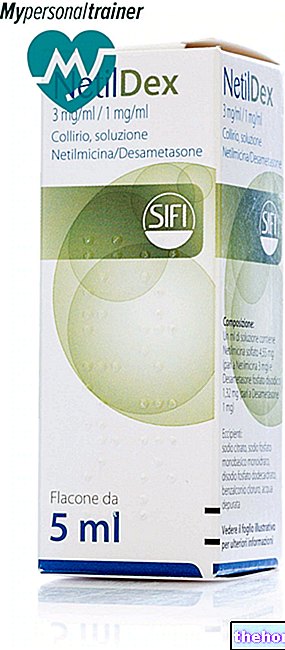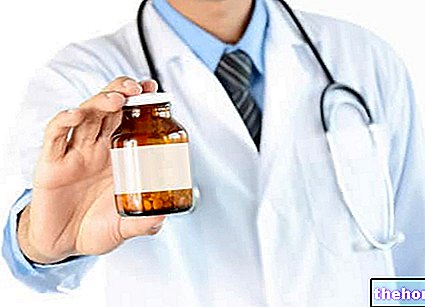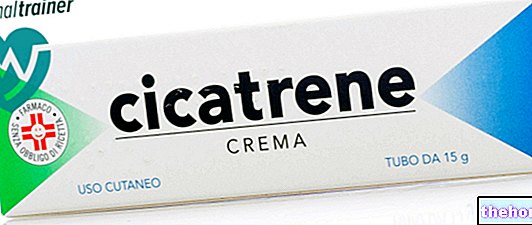Active ingredients: Chlorhexidine (chlorhexidine gluconate)
CORSODYL 200 mg / 100 ml oral mucosal solution
CORSODYL 200 mg / 100 ml oral mucosal spray
CORSODYL 1 g / 100 g dental gel
Why is Corsodyl used? What is it for?
WHAT IS IT
CORSODYL oral mucosal solution and spray and CORSODYL dental gel are anti-infectives and antiseptics for local oral treatment.
WHY IT IS USED
Disinfectant action of the oral cavity, even before and after tooth extractions or small operations.
Anti-plaque action, adjuvant in the prevention of gingivitis and periodontitis secondary to the formation of dental plaque.
Protective action against infections in wearers of fixed or mobile prostheses, for the antiseptic activity on teeth and gums
Contraindications When Corsodyl should not be used
Hypersensitivity to the active substance or to any of the excipients.
Precautions for use What you need to know before taking Corsodyl
Avoid contact with eyes and ears.
If the product comes into contact with the eyes or ears, wash them promptly with water.
The product is for external oral use only; do not swallow. In case of pain, swelling or irritation of the mouth, stop treatment and consult your doctor or dentist.
Transient changes in taste and transient sensations of numbness, tingling or burning of the tongue may initially occur. These effects usually lessen with continued use. If they persist, consult your doctor or dentist.
The use, especially prolonged, of products for topical use can give rise to sensitization phenomena, in this case stop the treatment and consult the doctor to establish a suitable therapy.
Chlorhexidine gluconate can cause superficial discoloration of the tongue, teeth and some materials used for fillings and dentures. Stains are not permanent and can be largely prevented by reducing the consumption of foods or beverages that can stain, such as tea, coffee, and red wine.
As for the teeth and orthodontic material, this coloring can be prevented with the daily use of a common toothpaste or before the use of CORSODYL solution, oral mucosa spray and dental gel, taking care to rinse the mouth with water in the "interval between the two treatments, or at another time of day.
These precautions are necessary as chlorhexidine gluconate is incompatible with anionic compounds typically found in common toothpastes.
In some cases, the staining can be removed by resorting to professional cleaning.
In the case of anterior prostheses and fillings that have infiltrated edges and / or rough surfaces, the pigmentation may persist even after professional cleaning.
A professional cleaning intervention may be required following treatments such as maxillary fixation or the application of orthodontic appliances that have not made it possible to carry out normal mechanical oral hygiene (eg brushing).
Interactions Which drugs or foods can modify the effect of Corsodyl
Tell your doctor or pharmacist if you have recently taken any other medicines, even those without a prescription.
There are no known clinically significant interactions with other drugs.
Avoid the simultaneous use of other antiseptics.
If you are using other medicines ask your doctor or pharmacist for advice.
Chlorhexidine is incompatible with anionic compounds such as sodium lauryl sulfate (see "Precautions for use").
It is advisable not to use sodium hypochlorite (bleach, bleach, etc.) for bleaching linen that has come into contact with CORSODYL, to avoid the appearance of brown spots; use sodium perborate for possible bleaching.
Warnings It is important to know that:
If you experience a rash, swollen lips, tongue, throat or face, or have difficulty breathing, discontinue use of the product and seek medical attention immediately. These effects could be signs of a rare and severe allergic reaction ( see "Undesirable effects").
It is also advisable to consult your doctor in cases where these disorders have occurred in the past.
What to do during pregnancy and breastfeeding
Ask your doctor or pharmacist for advice before taking any medicine.
CORSODYL can be used during pregnancy and breastfeeding.
Effects on ability to drive and use machines
No effects on these abilities have been reported or known.
Important information about some of the ingredients
CORSODYL contains polyoxyethylene-hydrogenated castor oil. It can cause local skin reactions.
Dose, Method and Time of Administration How to use Corsodyl: Posology
When and for how long
Solution for oral mucosa
Adults
Pour 10 ml of CORSODYL into the special glass and rinse the mouth for about 1 minute twice a day until complete remission of symptoms; in case of ulcers or candidiasis continue the treatment for another 48 hours once clinical resolution has been achieved.
The product must not be diluted. Spit after use.
Oral mucosal spray
Adults
Spray on teeth and gums 2 times a day.
The maximum daily dosage is 12 sprays (approximately 0.14ml / per spray) twice a day, in the morning and in the evening.
Dental gel
Adults
Apply 2 cm of gel to teeth and gums for one minute, once or twice a day, using a soft toothbrush or fingers.
In denture wearers, after cleaning, apply a small amount of gel to the surfaces that come into contact with the gums.
Spit out the excess product. Do not rinse your mouth after applying the gel.
The doses recommended for adults are also suitable for use in elderly patients and children aged 12 years and over, unless otherwise prescribed by the doctor or dentist.
In children under the age of 12, Corsodyl should only be used on the prescription of a doctor or dentist.
Warning: do not exceed the indicated doses.
Do not use for prolonged treatments; after a short period of treatment without appreciable results, consult your doctor.
Consult your doctor if the disorder occurs repeatedly or if you notice any recent change in its characteristics.
Like
Solution for oral mucosa. It is equipped with a capsule with a difficult-to-open closure system.
Overdose What to do if you have taken too much Corsodyl
Chlorhexidine is poorly absorbed orally. Ingestion of CORSODYL, even in large quantities, should not produce systemic effects: however, in this case it is advisable to contact a doctor to establish a suitable therapy.
CORSODYL solution and spray for oral mucosa contain 6.72% ethyl alcohol, therefore the assumption of high doses by children requires attention and the eventual recourse to the doctor to establish a suitable therapy.
In case of accidental ingestion / intake of an excessive dose of CORSODYL, notify your doctor immediately or go to the nearest hospital.
If you have any further questions on the use of CORSODYL, ask your doctor or pharmacist.
Side Effects What are the side effects of Corsodyl
Like all medicines CORSODYL can cause side effects, although not everybody gets them.
The undesirable effects reported are generally minor and local in nature.
Clinical trial data
Very common side effects (may affect more than 1 in 10 people): coated tongue.
Common side effects (may affect up to 1 in 10 people): dry mouth, taste changes, pain in the tongue, numbness in the mouth.
Post-marketing data
Frequency not known (frequency cannot be estimated from the available data): severe allergic reactions, manifesting as a rash, swelling of the lips, tongue, throat or face, or difficulty in breathing (see "It is important to know that ").
Superficial discoloration of the tongue and teeth (see "Precautions for use"), pain / irritation of the mouth, flaking / pain / swelling of the oral mucosa (see "Precautions for use"), swelling of the parotid glands.
These side effects are usually transient. However, when they occur, it is advisable to consult your doctor or pharmacist. Compliance with the instructions contained in the package leaflet reduces the risk of undesirable effects.
Reporting of side effects
If you get any side effects, talk to your doctor, pharmacist or nurse. This includes any possible side effects not listed in this leaflet. You can also report side effects directly via the national reporting system at www.agenziafarmaco.gov. en / en / responsible .. By reporting side effects you can help provide more information on the safety of this medicine
Expiry and Retention
Expiry: see the expiry date printed on the package.
The expiry date refers to the product in intact packaging, correctly stored.
Warning: do not use the medicine after the expiry date shown on the package.
CORSODYL dental gel: store at a temperature not exceeding 25 ° C.
CORSODYL oral mucosal solution: do not store above 25 ° C.
Medicines should not be disposed of via wastewater or household waste. Ask your pharmacist how to dispose of medicines you no longer use. This will help protect the environment.
Keep this medicine out of the sight and reach of children.
Solution for oral mucosa: do not use if the cork is broken or its security seal is broken or separated from it.
Oromucosal spray: do not accept the product if the bottle closure is not intact.
Dental gel: the sealing membrane of the tube opening must be intact.
It is important to always have the information about the medicine available, so keep both the box and the package leaflet.
Composition and pharmaceutical form
COMPOSITION
CORSODYL solution and spray for oral mucosa: 100 ml of solution contain: Active ingredient: 0.2 g chlorhexidine gluconate. Excipients: polyoxyethylene-hydrogenated castor oil, non-crystallizable sorbitol (70%), mint essence, ethyl alcohol (96%), purified water.
CORSODYL dental gel: 100 g of gel contain: Active ingredient: chlorhexidine gluconate g 1. Excipients: polyoxyethylene-hydrogenated castor oil, hydroxypropylcellulose, sodium acetate, menthol, mint essence, isopropyl alcohol, purified water.
HOW IT LOOKS
CORSODYL solution and spray for oral mucosa: the product is presented in the form of a transparent and colorless solution.
Pack sizes: oral mucosal solution - 150 ml bottle, oral mucosal spray - 60 ml bottle.
CORSODYL dental gel: the product comes in the form of a gel.
Packaging: 1 tube of 30 g.
Source Package Leaflet: AIFA (Italian Medicines Agency). Content published in January 2016. The information present may not be up-to-date.
To have access to the most up-to-date version, it is advisable to access the AIFA (Italian Medicines Agency) website. Disclaimer and useful information.
01.0 NAME OF THE MEDICINAL PRODUCT
CORSODYL
02.0 QUALITATIVE AND QUANTITATIVE COMPOSITION
CORSODYL solution and spray for oral mucosa
100 ml of solution contain:
Active principle
chlorhexidine gluconate 0.2 g
Excipients with known effects:
polyoxyethylene-hydrogenated castor oil
CORSODYL dental gel
100 g of gel contain:
Active principle
chlorhexidine gluconate g 1
Excipients with known effects:
polyoxyethylene-hydrogenated castor oil
For the full list of excipients see section 6.1.
03.0 PHARMACEUTICAL FORM
Transparent and colorless solution.
Gel.
04.0 CLINICAL INFORMATION
04.1 Therapeutic indications
Disinfectant action of the oral cavity, even before and after tooth extractions or small operations.
Anti-plaque action, adjuvant in the prevention of gingivitis and periodontitis secondary to the formation of dental plaque.
Protective action against infections in wearers of fixed or mobile prostheses, due to its antiseptic activity on teeth and gums.
04.2 Posology and method of administration
Solution for oral mucosa
Adults
Pour 10 ml of Corsodyl into the special glass and rinse the mouth for about 1 minute twice a day until complete remission of symptoms; in case of ulcers or candidiasis continue the treatment for another 48 hours once clinical resolution has been achieved.
The product must not be diluted. Spit after use.
Oral mucosal spray
Adults
Spray on teeth and gums 2 times a day.
The maximum daily dosage is 12 sprays (approximately 0.14ml / per spray) twice a day, in the morning and in the evening.
Dental gel
Adults
Apply 2 cm of gel to teeth and gums for one minute, once or twice a day, using a soft toothbrush or fingers.
In denture wearers, after cleaning, apply a small amount of gel to the surfaces that come into contact with the gums.
Spit out the excess product. Do not rinse your mouth after applying the gel.
The doses recommended for adults are also suitable for use in elderly patients and children aged 12 years and over, unless otherwise prescribed by the doctor or dentist.
In children under the age of 12, Corsodyl should only be used on the prescription of a doctor or dentist.
04.3 Contraindications
Hypersensitivity to the active substance or to any of the excipients listed in section 6.1.
04.4 Special warnings and appropriate precautions for use
Do not exceed the indicated doses.
Avoid contact with eyes and ears.
If the product comes into contact with the eyes or ears, wash them promptly with water.
The product is for external oral use only; do not swallow.
In case of pain, swelling or irritation of the mouth, stop treatment and consult your doctor or dentist.
In the event of skin rash, swelling or difficulty in breathing, discontinue use of the product and seek immediate medical attention.
Transient changes in taste and transient sensations of numbness, tingling or burning of the tongue may initially occur. These effects usually lessen with continued use. If they persist, consult your doctor or dentist.
The use, especially prolonged, of products for topical use can give rise to sensitization phenomena; in this case, stop the treatment and consult the doctor to establish a suitable therapy.
Do not use for prolonged treatments; after a short period of treatment without appreciable results, consult your doctor.
Chlorhexidine gluconate can cause superficial discoloration of the tongue, teeth and some materials used for fillings and dentures. The stains are not permanent and can be largely prevented by reducing the consumption of food chromogens, such as tea, coffee and red wine.
As for the teeth and orthodontic material, this coloring can be prevented with the daily use of a common toothpaste or before the use of Corsodyl solution, oral mucosa spray and dental gel, taking care to rinse the mouth with water in the mouth. "interval between the two treatments, or at another time of the day.
These precautions are necessary as chlorhexidine gluconate is incompatible with anionic compounds typically found in common toothpastes.
In some cases, the staining can be removed by resorting to professional cleaning.
In the case of anterior prostheses and fillings that have infiltrated edges and / or rough surfaces, the pigmentation may persist even after professional cleaning.
A professional cleaning intervention may be required following treatments such as maxillary fixation or the application of orthodontic appliances that have not made it possible to carry out normal mechanical oral hygiene (eg brushing).
Important information about some of the ingredients
CORSODYL contains polyoxyethylene-hydrogenated castor oil. It can cause local skin reactions.
04.5 Interactions with other medicinal products and other forms of interaction
There are no known clinically significant interactions with other drugs.
Avoid the simultaneous use of other antiseptics.
04.6 Pregnancy and lactation
There is no evidence of adverse fetal reactions attributable to use of the product during pregnancy, or to infants during lactation.
Therefore, no precautions other than those already mentioned in section 4.4 are necessary.
04.7 Effects on ability to drive and use machines
No effects on these abilities have been reported or known.
04.8 Undesirable effects
Undesirable effects from clinical trial data and post-marketing data are listed below by system organ class and frequency. Frequencies are defined as: very common (≥1 / 10), common (≥1 / 100,
Clinical trial data
Gastrointestinal disorders
Very common: coated tongue.
Common: dry mouth
Nervous system disorders
Common: ageusia / dysgeusia, glossodynia, paraesthesia / hypoesthesia of the oral cavity.
Post-marketing data
Gastrointestinal disorders
Frequency not known: superficial discoloration of the tongue and teeth (see "Special warnings and precautions for use"), mouth pain / irritation, flaking / pain / swelling of the oral mucosa (see "Special warnings and precautions for use") , swelling of the parotid glands.
Skin and subcutaneous tissue disorders
Frequency not known: idiosyncratic skin reactions.
Disorders of the immune system
Frequency not known: hypersensitivity, allergic reactions and anaphylaxis (see "Contraindications", "Special warnings and precautions for use").
The undesirable effects reported are generally minor and local in nature.
Reporting of suspected adverse reactions
Reporting of suspected adverse reactions occurring after authorization of the medicinal product is important as it allows continuous monitoring of the benefit / risk balance of the medicinal product. Healthcare professionals are asked to report any suspected adverse reactions via the national reporting system. "address www.agenziafarmaco.gov.it/it/responsabili
04.9 Overdose
Chlorhexidine is poorly absorbed orally. Ingestion of Corsodyl, even in large quantities, should not produce systemic effects, however in this case it is advisable to contact a doctor to establish a suitable therapy.
Corsodyl solution and spray for oral mucosa contain 6.72% ethyl alcohol, therefore the assumption of high doses by children requires attention and the eventual recourse to the doctor to establish a suitable therapy.
05.0 PHARMACOLOGICAL PROPERTIES
05.1 Pharmacodynamic properties
Pharmacotherapeutic group: anti-infectives and antiseptics for local oral treatment.
ATC code: A01AB 03
Corsodyl solution and spray for oral mucosa and Corsodyl dental gel are effective preparations as antiseptics in infections of the oral cavity.
The basic substance of Corsodyl is chlorhexidine, an original synthetic compound, with antiseptic action and bactericidal activity for the bacterial flora that is normally found in infections of the oropharyngeal cavity.
Chlorhexidine gluconate is an effective adjuvant in the prevention and treatment of gingivitis and periodontitis.
The use of an antiseptic agent based on chlorhexidine, fighting the formation of dental plaque, can be useful for maintaining oral hygiene particularly in subjects unable to carry out mechanical oral hygiene such as wearers of orthodontic appliances, traumatized and the handicapped.
Corsodyl 0.2% chlorhexidine gluconate solution is an effective adjuvant in the treatment of prosthetic stomatitis, aphthous ulcers and candidiasis.
Corsodyl 1% dental gel is a preparation designed for topical application both on the teeth and on the gums.
05.2 Pharmacokinetic properties
Chlorhexidine gluconate is a highly cationic molecule that binds strongly to the skin, mucous membranes and tissues, and consequently is poorly absorbed. In this way, chlorhexidine gluconate prolongs its availability inside the oral cavity.
No determinable blood levels were found after oral administration.
05.3 Preclinical safety data
The preclinical safety data on chlorhexidine available in the literature do not highlight relevant information for the indications and recommended dosages.
06.0 PHARMACEUTICAL INFORMATION
06.1 Excipients
CORSODYL solution and spray for oral mucosa: polyoxyethylene-hydrogenated castor oil, 70% non-crystallizable sorbitol, mint essence, ethyl alcohol (96%), purified water.
CORSODYL dental gel: polyoxyethylene-hydrogenated castor oil, hydroxypropylcellulose, sodium acetate, menthol, mint essence, isopropyl alcohol, purified water.
06.2 Incompatibility
Incompatible with anionic compounds typically found in common toothpastes.
Chlorhexidine is incompatible with anionic compounds such as sodium lauryl sulfate (see section 4.4).
06.3 Period of validity
3 years.
06.4 Special precautions for storage
CORSODYL oral mucosal spray: none.
CORSODYL dental gel: store at a temperature not exceeding 25 ° C.
CORSODYL oral mucosal solution: do not store above 25 ° C.
06.5 Nature of the immediate packaging and contents of the package
Oromucosal solution: 150 ml yellow glass bottle.
Oromucosal spray: 75ml clear sodium glass bottle (filled to 60ml) covered externally with an opaque white PVC laminate.
Dental gel: Aluminum tube internally lacquered with epoxy-phenolic resin.
06.6 Instructions for use and handling
Unused medicine and waste derived from this medicine must be disposed of in accordance with local regulations.
07.0 MARKETING AUTHORIZATION HOLDER
GlaxoSmithKline Consumer Healthcare S.p.A. - Via Zambeletti s.n.c. - Baranzate (MI)
08.0 MARKETING AUTHORIZATION NUMBER
Solution for oral mucosa - bottle of 150 ml AIC 014371037.
Oromucosal spray - 60 ml bottle AIC 014371052.
Dental gel - tube of 30 g AIC 014371088.
09.0 DATE OF FIRST AUTHORIZATION OR RENEWAL OF THE AUTHORIZATION
First authorization: mouthwash and nebulizer 30/06/1988, dental gel 29/11/1995.
Renewal: June 2010.
10.0 DATE OF REVISION OF THE TEXT
October 2015




























